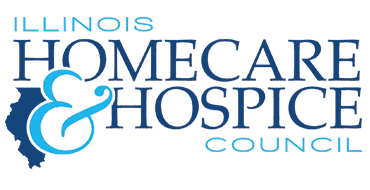Understanding Caregiver Stress
Patients’ family caregivers can be critical partners to the care which home health providers deliver to their loved one. However, the burden of caregiving can increase family members’ risk of experiencing high levels of stress, exhaustion, sleep disturbance, anxiety, and depression. Caregivers are also at risk for developing significant health problems and burnout. According to Home Instead Senior Care, caregivers share the following issues:
- 90% have experienced episodes of anxiousness or irritability
- 83% say caregiving is “very demanding”
- 77% describe the needs of their seniors as “overwhelming”
- 77% say caregiving is taking a toll on their family lives
- 56% say they were falling ill more frequently
- 56% say caregiving takes a toll on their jobs
Reconciling Caregivers’ Expectations for Home Health
Caregivers may also be unsure of their role vs. the home health agency’s clinicians in providing care. The Journal of Hospital Medicinehighlighted research which summarized caregivers’ expectations for services beyond the scope of skilled home health care. The research demonstrated two main themes of clearand unclearexpectations for home health care after discharge. Clear expectations occur when the patient and/or caregiver have expectations for home health care that align with the services they receive. Unclear expectations occur when the patient and/or caregiver expectations are uncertain or misaligned with the services they receive. Unclear expectations may also include the assumption that skilled home health team members will provide assistance with personal care for patients such as showering and housekeeping. Upfront education and ongoing engagement from home health clinicians can set caregivers’ expectations about their own role in supporting the skilled care of their family member.
How Virtual Care Can Help
Virtual care can set caregiver expectations and address immediate concerns by initially assisting the transition of care to home health and then augmenting the care delivered by the visiting nurse. With a virtual care platform, the home health nurse and the family caregiver can align on the immediate next steps in patient care and their respective (and potentially evolving) responsibilities during ongoing care for the patient:
- The agency can use HIPAA-compliant video functionality to introduce the staff member responsible for handling the care at home for the patient, prior to hospital discharge and/or the first in-home visit.
- “Live” training or reinforcement of nursing tasks can be provided over video at the beginning of the episode of care and also provided on-demand to bolster the caregiver’s skills and confidence.
- The caregiver can also use bidirectional communication functionality to access their loved one’s home health staff on-demand with critical questions about a patient’s change in condition.
- A cascade of ongoing messages can remind caregivers of their loved one’s medication schedule and upcoming appointments.
According to the American Journal of Nursing, the role of home health nurses has expanded frombeing primary caregivers toteaching and assisting family members to provide care. Throughout the episode of care, a home health agency can provide reassurance, counseling and comfort to the family caregiver via video and/or messaging.

